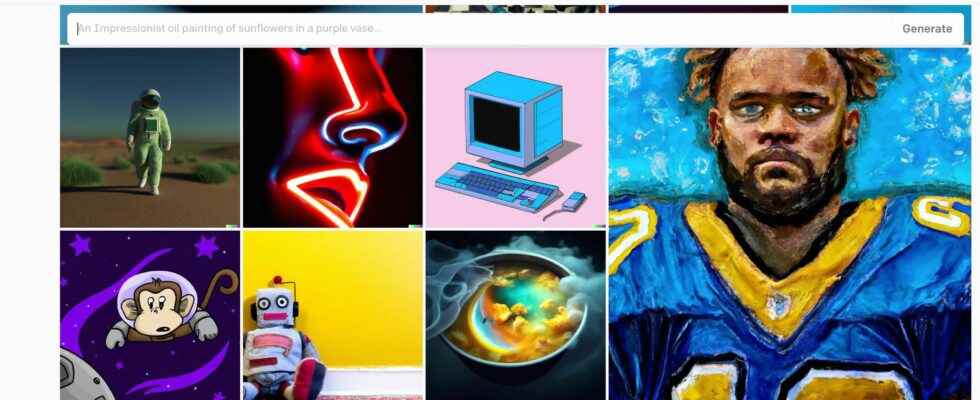The threat of trial has been hovering over artificial intelligence for weeks. It is starting to materialize. Artists Karla Ortiz, Sarah Andersen and Kelly McKernan filed a complaint against the designers of generative image AIs Stable Diffusion, Midjourney and DreamUp. They accuse them of having infringed the copyrights of “millions of artists” by training their artificial intelligences on billions of works found on the Internet.
The Getty Images photo agency also began legal proceedings on Tuesday, January 17 against Stability AI, the publisher of Stable Diffusion for the same reason. She believes that the company has not respected the copyright of works that the agency owns and artists that it represents. She “copied without authorization millions of protected images”, accuses the photo agency in A press releasestating that Stability AI has not taken out Getty’s license specifically designed for AI training.
These tools are part of a new range of so-called “generative” AIs that have amazed professionals and the public with their creative capabilities. Some like Stable Diffusion or Midjourney generate superb images from simple commands (draw a “portal to another galaxy” or “Leonardo da Vinci in jeans and sneakers”…). Others like OpenAI’s ChatGPT can write amazing consistency texts on demand (write me “a pitch for a car rental start-up”, “a summary of the industrial revolution”, a “speech on advances in quantum technology”…). These generative AIs open up exciting prospects: with them, any Internet user can give life to the worlds he imagines. Companies can quickly and inexpensively obtain personalized visuals or delegate certain missions to these AIs (writing standard emails, website FAQs, etc.).
AIs capable of copying the style of contemporary artists
This will for sure reduce the time spent on tedious tasks. But this revolution will have a strong impact on employment in the creative sectors, where many professionals are already juggling between large-scale creations and food projects to make ends meet. Where the shoe pinches is that this digital competition has been driven on vast sets of images or texts created by… humans.
Even more embarrassing, these AIs are now able to automatically copy the style of artists, both dead and contemporary. A student thus proposed last November, a customized version of these new AIs to mass generate illustrations inspired by those of Hollie Mengert, illustrator and designer at Disney, rating The Verge. Creating this homemade version only took the user “2h30 and cost him less than two dollars”, reveals Andy Baio, former CTO of Kickstarter and author of the Waxy-blog who spoke to him.
These AIs constitute a real legal headache: the individual contribution of each of the works on which they train is both significant and negligible. For it is precisely from their multitude that intelligence is born. Moreover, if this intelligence occurs, it is only because AI researchers have previously found ingenious ways to analyze and exploit these masses of data.
Many countries, including the United States, provide exceptions to copyright. This is what allows anyone to quote an excerpt from a book in a review or blog post without breaking the law. In the United States, these exceptions are grouped under the broad umbrella of the fair use which takes into account many factors to assess the “fair” character of a use. For example, the extent of the borrowing: is the initial work a significant part of the production that uses it? The nature and purpose of the new production (educational, commercial, research, etc.) are also taken into account. The verdict of this case should help a lot to clarify the new rules of the game. For now, it’s still the Wild West.
